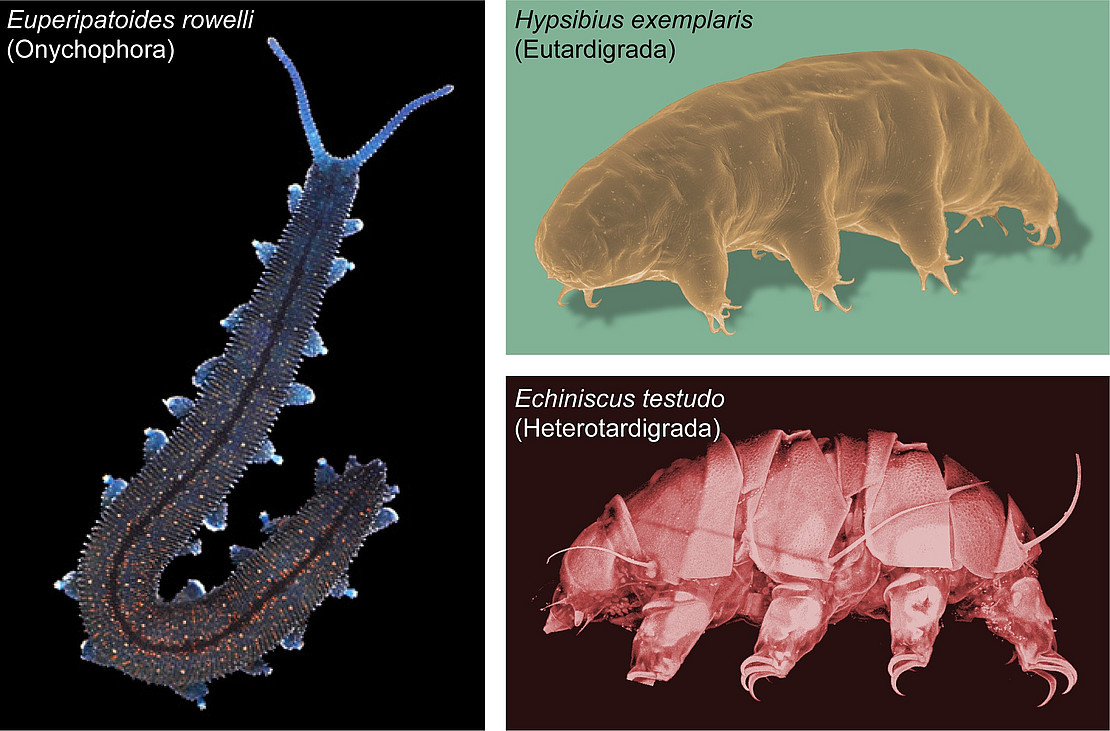Project 4
P4: Localization and interaction of PDF neuropeptides with other members of the circadian clock in representatives of Tardigrada (water bears)
Collaborators
- PI Prof. Dr. Friedmann (Mathematics) (öffnet neues Fenster)
- PI Prof. Dr. Garcia (Physics) (öffnet neues Fenster)
- PI Prof. Dr. Herberg (Biology) (öffnet neues Fenster)
- PI PD Dr. Neupert (Biology) (öffnet neues Fenster)
- PI Prof. Dr. Popov (Physics) (öffnet neues Fenster)
- PI Prof. Dr. Stengl (Biology) (öffnet neues Fenster)
Project description
Numerous studies have focused on members of the circadian clock in arthropods, but little is known about this system in their closest relatives, tardigrades (water bears) and onychophorans (velvet worms). The main goal of this project is therefore to investigate the biological rhythms in tardigrades and onychophorans and to compare them to those in well-established arthropod model systems. While ongoing behavioral experiments with tardigrades focus on daylight-dependent activities, previous research already revealed distinct reactions to light (positive versus negative phototaxis) in tardigrades and onychophorans. To elucidate the basis of this behavior, we will examine the similarities and differences in the composition and localization of key members of the circadian clock in the onychophoran Euperipatoides rowelli, the eutardigrade Hypsibius exemplaris, and the heterotardigrade Echiniscus testudo (Fig. 1). Using a multi-methodological approach (transcriptomics, proteomics, RT-qPCR), we will analyze the molecular basis of rhythm generation and localize the pacemaker neurons in the brain of these species using HCR-FISH, immunohistochemistry, and confocal microscopy. These findings will help to clarify the question of whether the pigment-dispersing factor (PDF) neuropeptides are involved in the synchronization of clock neurons in these species. Furthermore, the different lifestyles of these animals make them ideal research objects for investigating the impact of environmental factors on the evolution of circadian clocks in Panarthropoda (Tardigrada, Onychophora, and Arthropoda).

Figure 1
